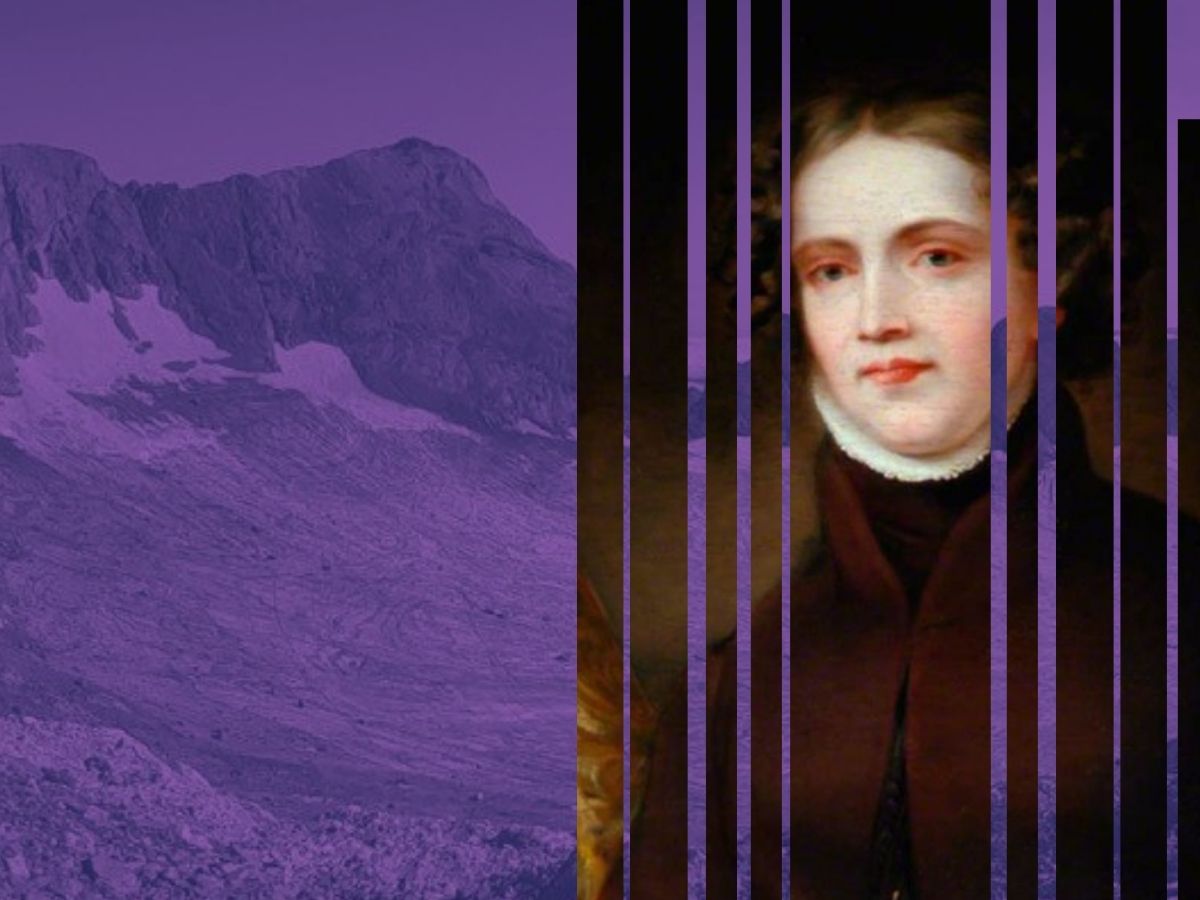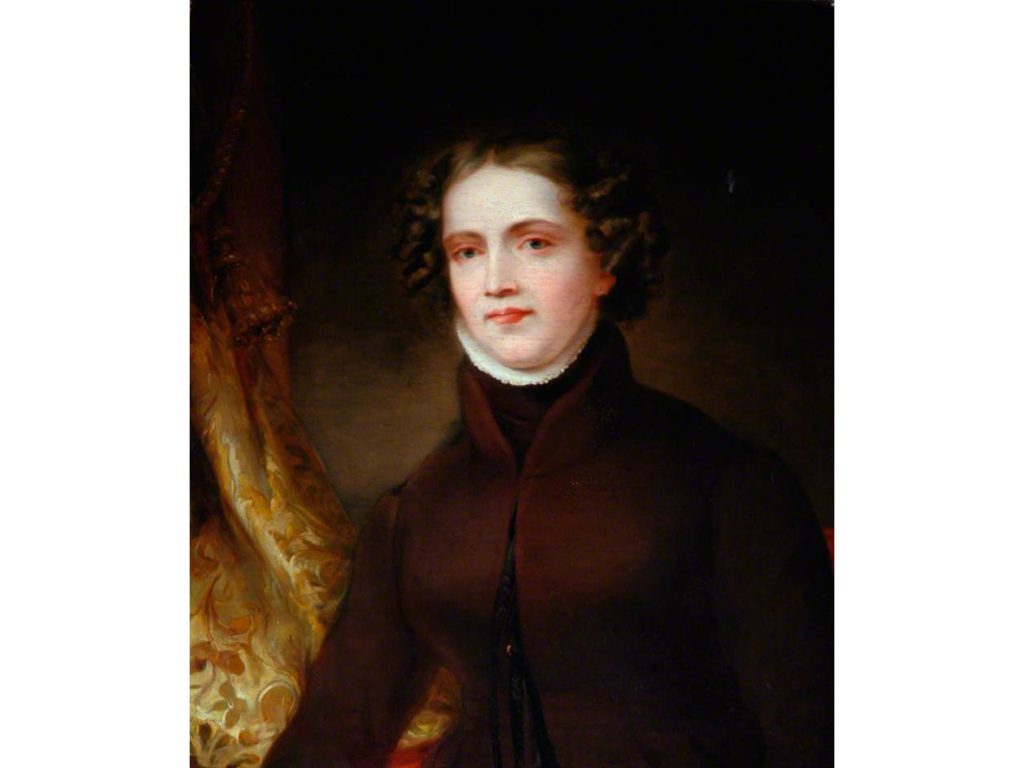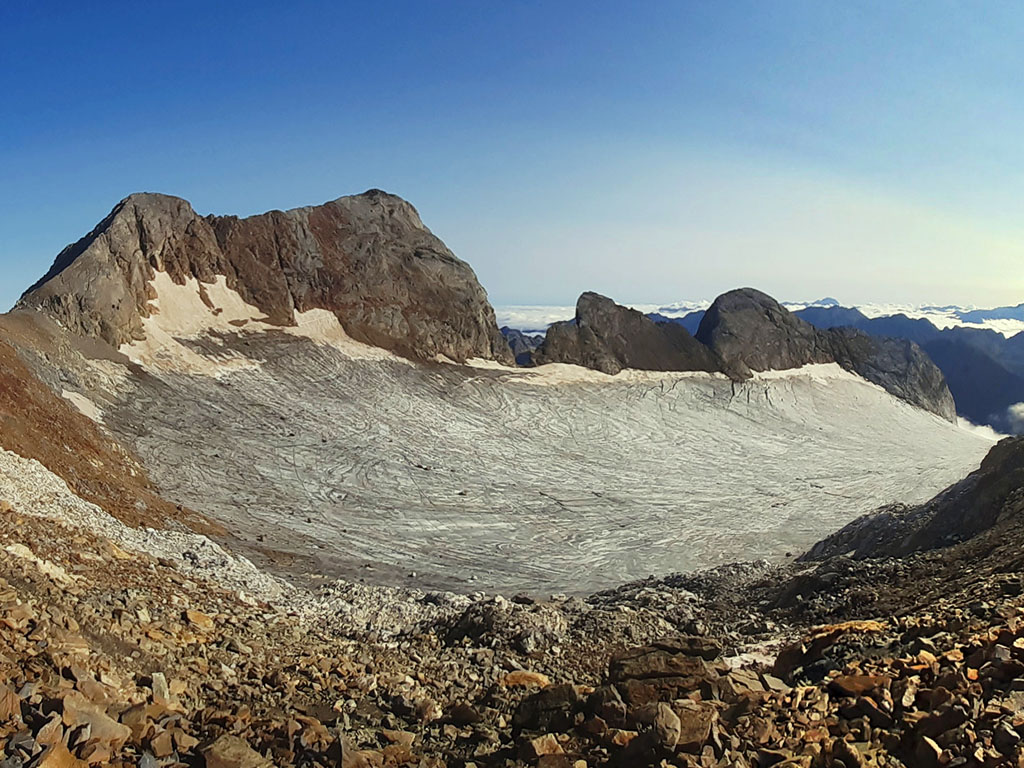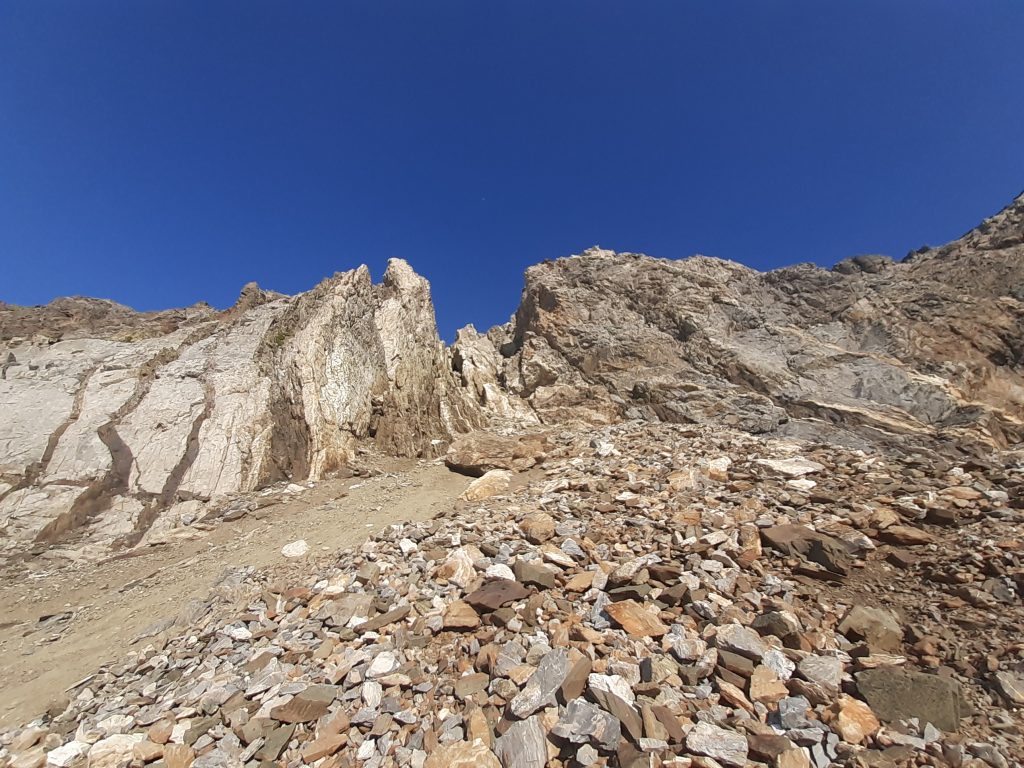Inspirational biographies: Anne Lister, the first to climb the Vignemale

To speak of the first official ascent of the Pique Longue (7 August 1838), Comachibosa in Aragonese, is to speak of Lady Lister, the Prince de la Moskowa and the role played by the guides in this controversial first ascent, especially Henri Cazaux and Jean-Pierre Charles.
The dispute over who would be the first to climb the Vignemale was such that it had to be settled by the intervention of a lawyer from Lourdes (Mr Latapie), by means of a document that the Cazaux guides, Charles and Pierre, signed in an inn in Gèdre in the presence of several witnesses.
The story of these events, which took place between 5 and 18 August 1838, is one of the most famous historical episodes in Pyreneanism, which we have been able to learn about thanks to Anne Lister's diary.
The Spanish translation of the original document on the ascent of the Vignemale can be found in the book "Cumbres Pirenaicas" by Claude Dendaletxe, published by Sua Edizioak in 2002. More recently (2009), his diaries have also been published: "Gentleman Jack. The diaries of Anne Lister" and even a series on his life: "Gentleman Jack", available on HBO.

This is a story that was covered up for a long time. Perhaps because she was a woman, perhaps because she was a foreigner, or perhaps because the Prince de la Moskowa took care of the media coverage of the Vignemale ascent. In any case, Anne's story was forgotten until 1967-1969, when the researcher Luc Maury discovered Anne Lister's manuscripts and decided to investigate them.
Important clarification:
In the following lines we review the history of what is considered to be the first ascent of the Vignemale, however, more than likely, the real first climbers were neither Miss Anne Lister nor the Prince de la Moskowa. Who were the first? Guides, hunters, shepherds... The answer, at the end of this story.
Anne Lister
Our protagonist, Miss Anne Lister (1791-1840) was a woman born in Shibden Hall (Yorkshire, England) who lived with her aunt and uncle, from whom she inherited a large fortune in 1826. Contrary to what would have been normal for the time, Anne, a wealthy woman, did not limit herself to maintaining an affluent life, in fact, she could not stand the hypocrisy of the kind of social events she was forced to attend; and she became a businesswoman used to making decisions. A woman of means, full of restlessness, willing to travel and to pursue her dreams.
She made numerous trips around Europe and in 1827 she organised an expedition to climb Mont Blanc. If she had succeeded, she could have become the first woman to reach its summit, but winter was already upon her and she had to give up. However, three years later, in 1830, she achieved the first known female ascent of Mont Perdu and in 1838, the first absolute ascent of the Vignemale.
On the other hand, we cannot overlook the fact that Anne was a lesbian woman, considered by many to be "the first modern lesbian", and that she suffered harassment as a result. Among her diaries, a very important part is devoted to her love affairs. A part she wrote in a combination of algebra and ancient Greek. Ann Walker, the woman who accompanied Anne Lister on this journey to the Vignemale, was his great love, to whom he bequeathed his fortune. Unfortunately, the Lister family took all the inheritance from Ann Walker and she ended up dying years later in an asylum, being considered insane.

Lady Lister's ascent of the Vignemale (7 August 1838).
August 5th dawned cloudy in the hut of Saoussat-Debat, in the Ossoue valley, 2 hours on horseback from Gavarnie. Ann Walker did not seem to be feeling well and by midday, the weather was still not improving. Anne Lister decides to return with Ann Walker to Gèdre and to give her instructions to the local guide (Cazaux) to come to the hut as soon as the weather improves. Cazaux is the person who knows the terrain best and holds the key to the ascent of the Vignemale.
The next day (6 August) it is cloudy again, but the news arrives that changes everything. Charles, the most experienced guide who will accompany Anne to the Vignemale, tells her that the Prince de la Moskowa has hired Cazaux to set off for the summit of the Vignemale on Thursday (the 9th). Miss Lister had always said that she was not doing this for glory, but for pleasure, but the news that the prince was going ahead of her seemed to disturb her. So she makes a quick decision to return that same day to the hut with her guides Charles and Pierre, where she will join Cazaux and Charles' brother-in-law, who will bring the horses back the next day. That night, the five of them will spend the night at the hut, together with five other shepherds.
At two o'clock in the morning of the 7th, without having slept, they got up to continue on horseback for another two hours towards the Vignemale. The difficulties began around 7 am and during the following hours they had to put on and take off their crampons several times. The weather had been clear all the way up, but when they reached the top at about twenty to twelve o'clock, clouds surrounded them. They reached the summit at about one o'clock, again in sunny weather, and to record their ascent they built a stone column inside which they left a bottle with their names written on it (Anne Lister, Jean-Pierre Charles, Jean-Pierre Sanjou and Henri Cazoux).

The descent is exhausting and it is not until 8 p.m. that they reach the Soussat-Debat hut again.
In the days that followed, Anne continued her journey through Spain, which took her to Bujaruelo, Torla and Jaca, before returning to Saint-Sauveur on 14 August. During this time, the Prince de la Moskowa managed to reach the summit of the Vignemale with his brother, Cazaux and four other guides. On 11th August, four days later than Anne.
Anne was walking in Saint-Sauveur on 14 August when Charles told her that Cazaux had tricked the Prince into believing that neither she nor he had reached the summit, although the other guides had. His intention, no doubt, had been to ask the Prince de la Moskowa for the price of a first ascent (it should be noted that in those days, ascents by guides, shepherds and others did not count).
The rest of this story becomes a bit of a ramble. The prince had been deceived and did not want to admit it. In the end, he finally accepts the facts and everything is settled in Lady Lister's favour with a document signed at the inn in Gèdre in which the guide Cazaux retracts his statement. The translation of this certificate is taken from the book "Pyrenean Summits" by Claude Dendaleche published by Sua in 2002. It reads as follows:
The undersigned, Henri Cazaux, residing in Gèdre, declares in all honesty that on the seventh of August, I served as a guide to Mrs. Ann Lister of Shibden Hall for the ascent she made on that day. I took with me two other guides that I had hired in Luz, Jean-Pierre Charles and Jean-Pierre Sanjou.
I certify that we all reached the highest point of the Vignemale together and that, as far as I know, no other person has ever climbed so high. As proof of the ascent, a sort of stone column was erected in the centre of which we placed a bottle containing a piece of paper on which Mrs. Lister wrote her name and the names of her guides on the seventh of August. This material proof will remain for a long time if no traveller as intrepid as Mrs. Lister does not destroy this little monument.
In witness whereof, I hereby issue this certificate at Gèdre, 17 August 1838.
Signed in the presence of: Cazaux Henri, Alambon, Jean Pierre Charles and Jean Pierre Sanjou, the undersigned certify the authenticity of the facts related in the above declaration.
Given at Luz, 17 August 1838.
Charles...
At that point, Lister paid Cazaux and added 5 francs to ensure that no one destroyed the bottle and that no one built a taller column.
Parallel stories:
In the book "The Conquest of the Pyrenees" by Marcos Feliú, also published by Sua, we find new facts about the same story. Apparently, a year earlier, some bathers in Saint-Sauveur had commissioned Cazaux to find a route to climb the Vignemale, promising him a large reward.
From this journey, Cazaux wrote this account, which we extract from Feliú's book, now translated into Spanish:
"I had been commissioned by a traveller to find a way to the top of the mountain and was promised a good reward if I reached it. For more than eight days, I travelled with my brother-in-law Bernard Guillembert over the snows, the rocks and the glaciers without being able to get close to this accursed summit. But on 8 October, an hour after midday, we were on the great glacier overlooking the Ossoue Valley. The ground suddenly failed us and we both fell into a deep crevasse, our bodies bruised and deprived of our senses for some time. We got up and, crawling along, followed the bottom of the crevasse. After having wandered for a long time through the labyrinth of its cavities, we found a sort of chimney, through which we climbed gradually, using our crampons. At last we had the good fortune to return to the glacier and found ourselves at sunset on a plain of snow flanked by four peaks of similar height. After an hour, we reached the highest peak of the Vignemale. We were forced to sleep on the mountain and the next day, we were lucky enough to find an easy road on the Cerbillona side in Spain. We couldn't drive our foreigner who had already left Saint-Sauveur".
From the above, and taking into account the ease with which Cazaux took his clients to the top of the mountain, it seems to be demonstrated that he would have reached the summit of the Vignemale with his brother-in-law Bernard Guillembert a year earlier.
The plot twists did not end there and later, Luc Maury, the same researcher who discovered Anne Lister's writings, made another interesting discovery by studying Junker's geodetic station cards. It seems that Louis-Philippe Reinhard Junker, the official geographer in charge of the topographical work to delimit the border with Spain during the years following 1785, as well as Vicente de Heredia on the Spanish side, made a complete series of observations from some of the highest peaks in the Pyrenees. According to these findings, on 2 August 1792 (46 years before Anne Lister), unknown shepherds may have reached the summit of the Vignemale and erected a turret.
The story does not end here, and on the Spanish side, something very similar may have happened with Monte Perdido in 1791. It seems quite likely that in that year, Vicente de Heredia himself visited the summit, nine years ahead of Ramond de Carbonnières. Something that stirs up the history of Pyreneanism, but that is another matter.
Don't miss any adventure in the Pyrenees!

